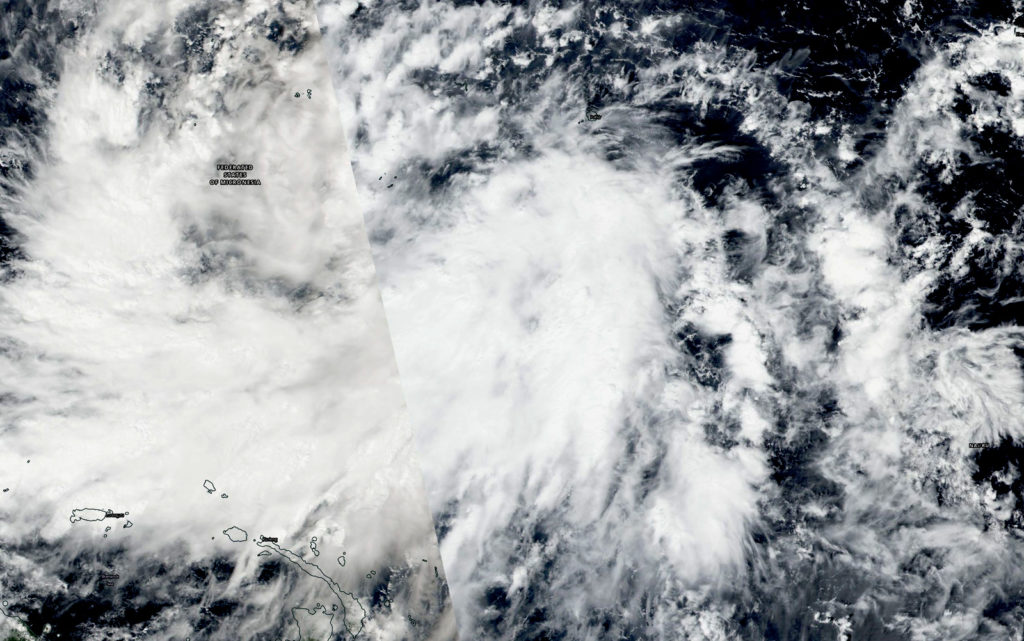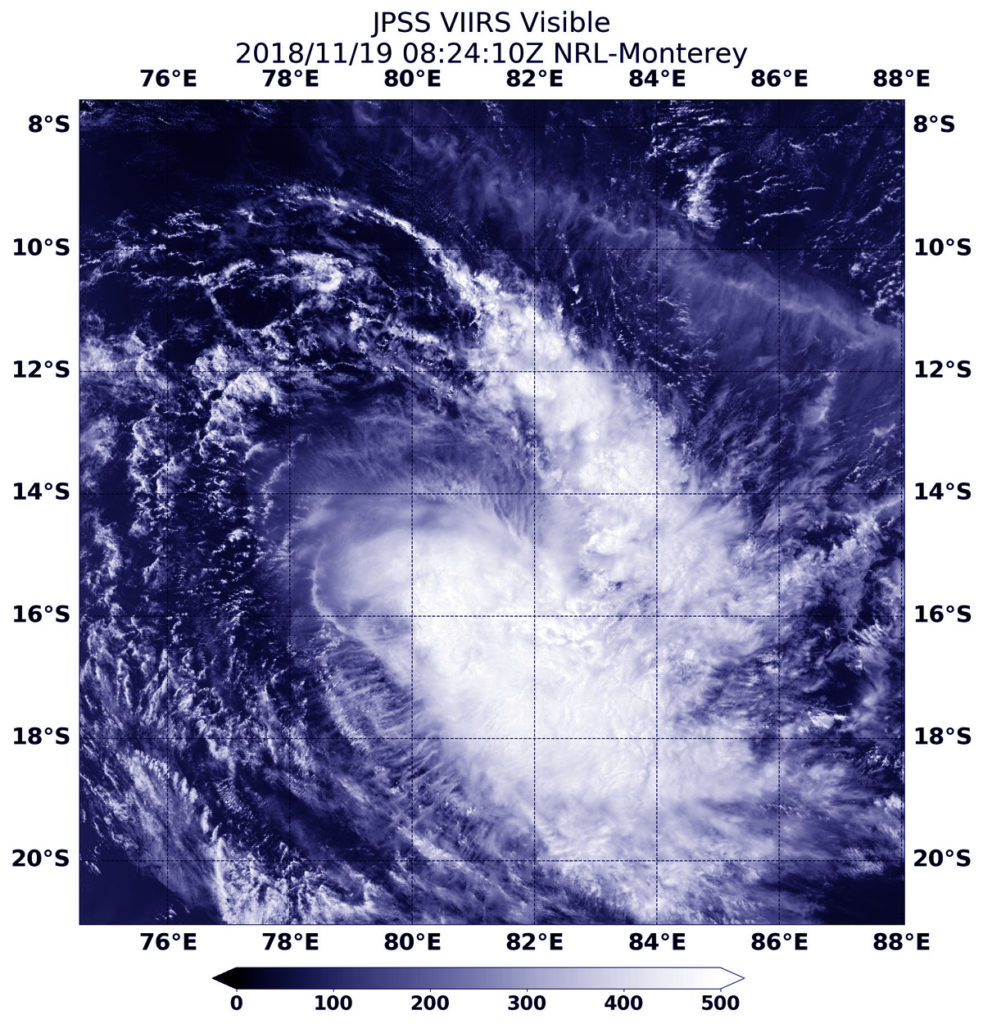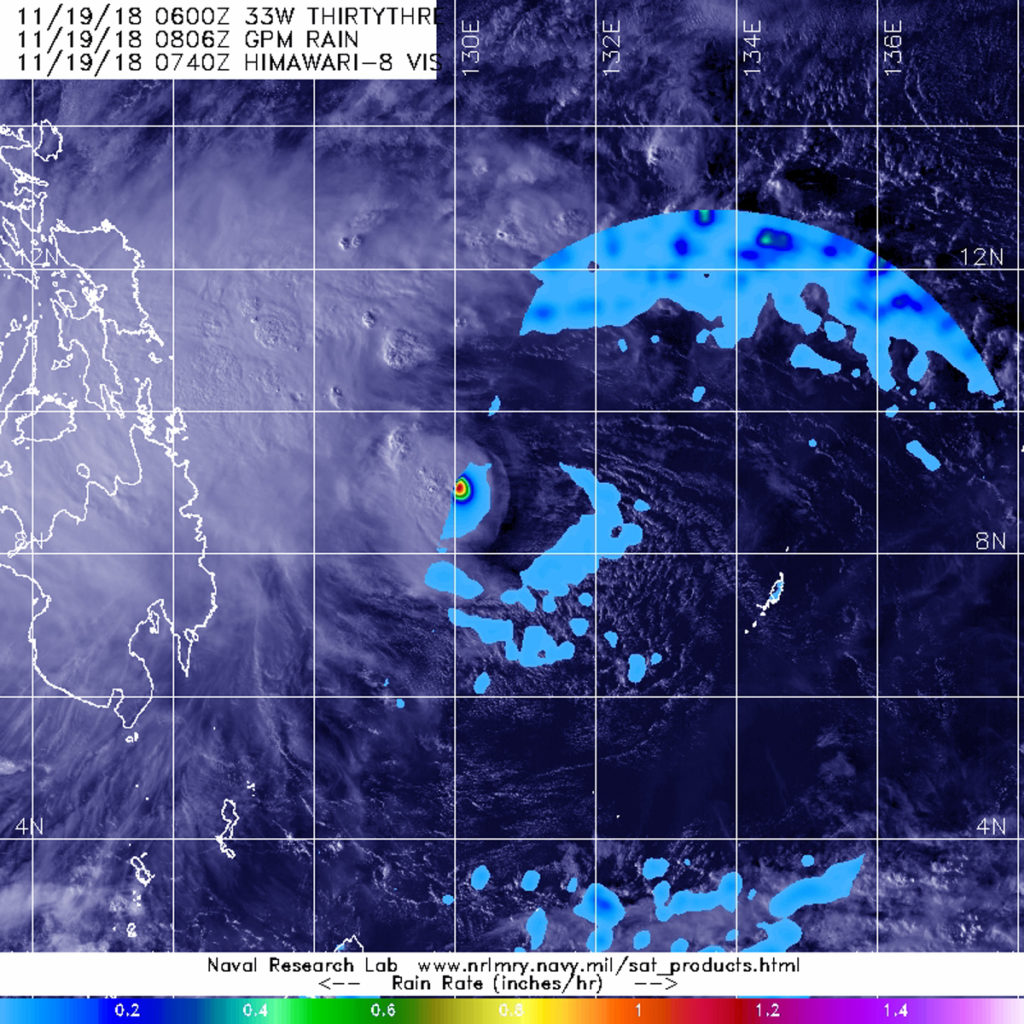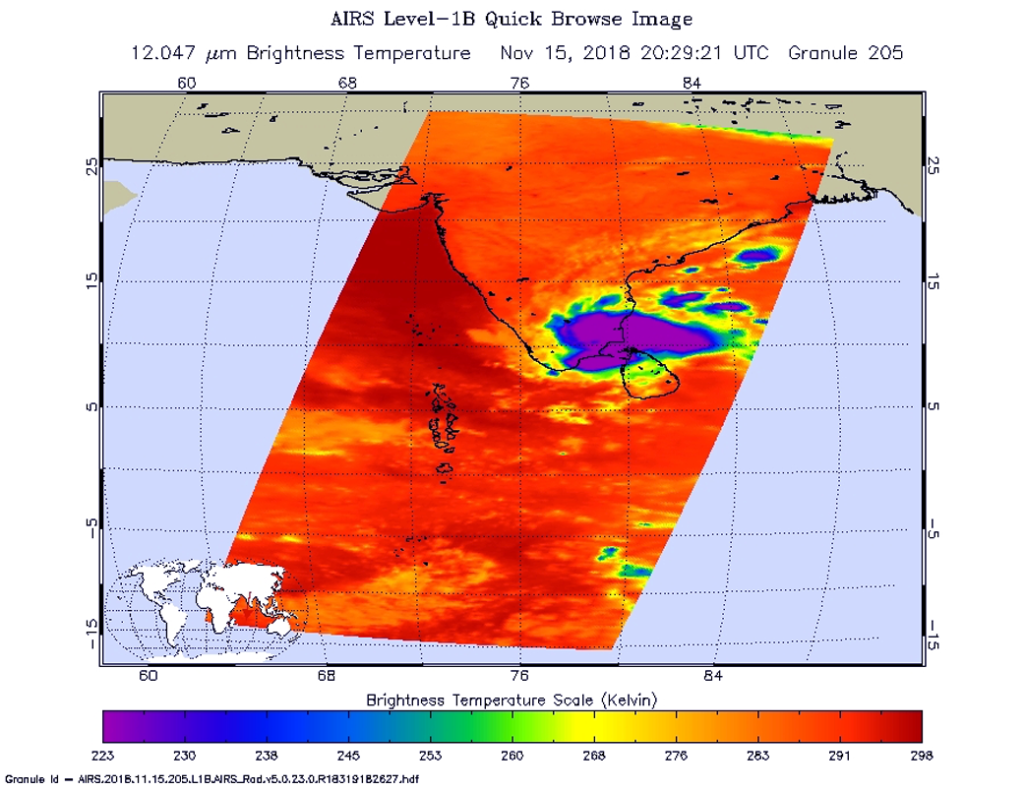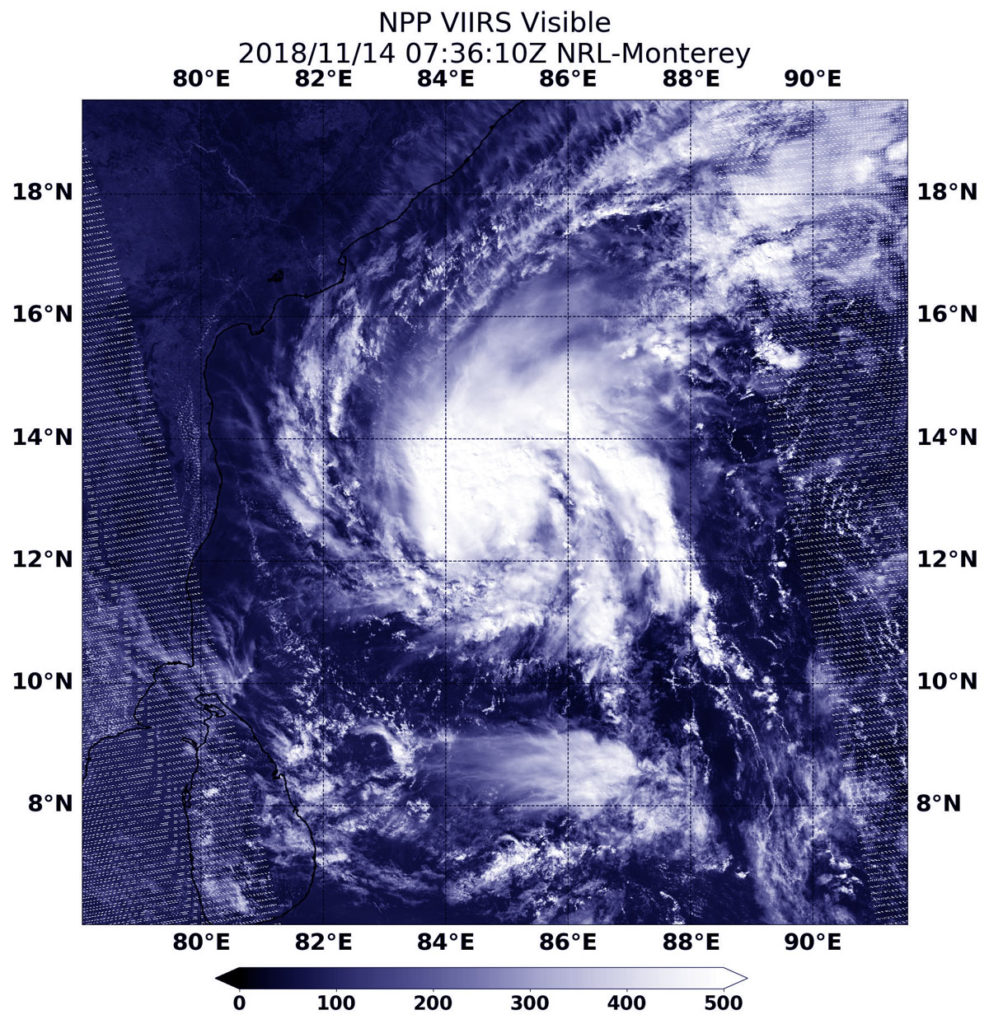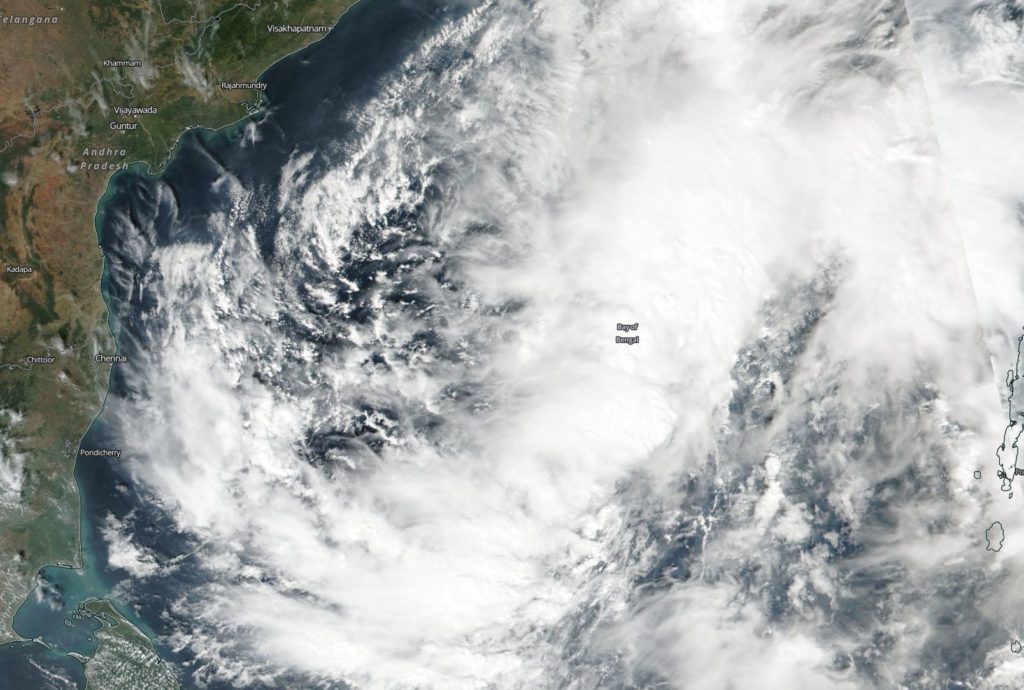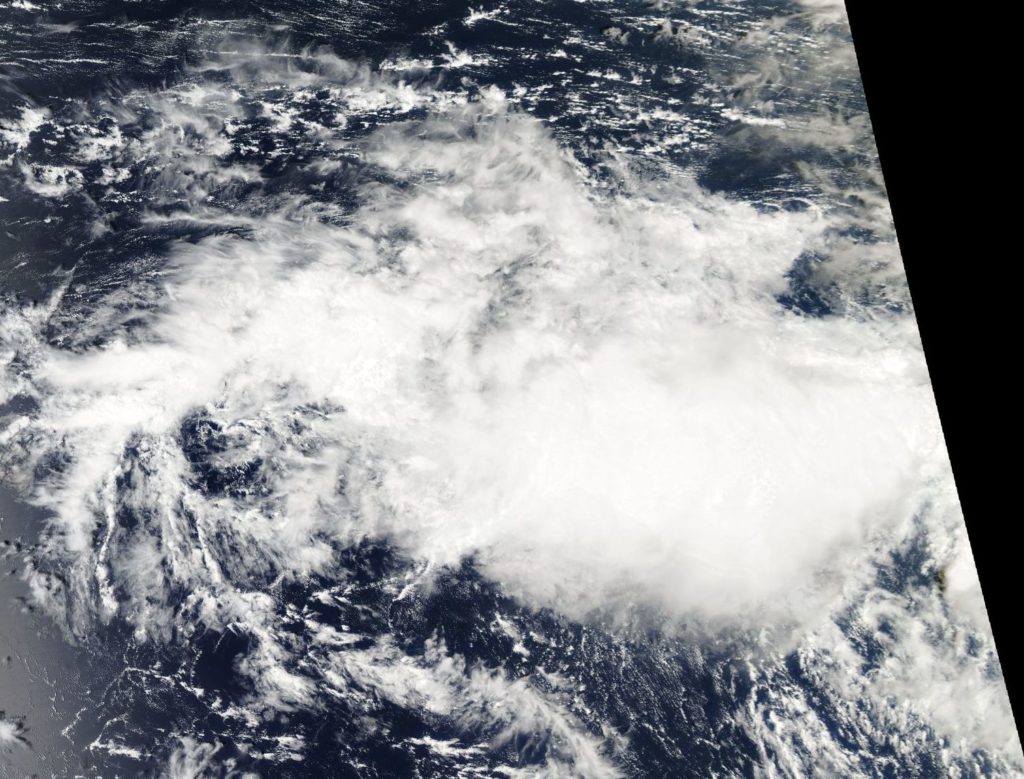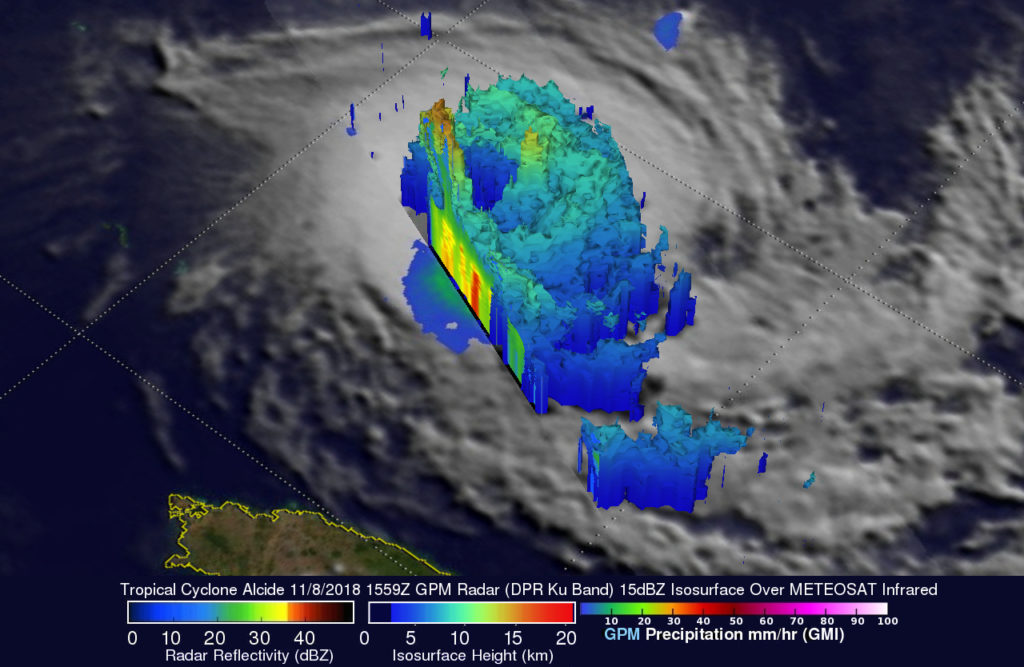November 20, 2018 – NASA Sees Tropical Depression 33W Affecting Philippines
Visible imagery from NASA’s Terra satellite revealed the extent of Tropical Depression 33W showed the tropical low pressure system moving into the central part of the Philippines on Nov. 20.
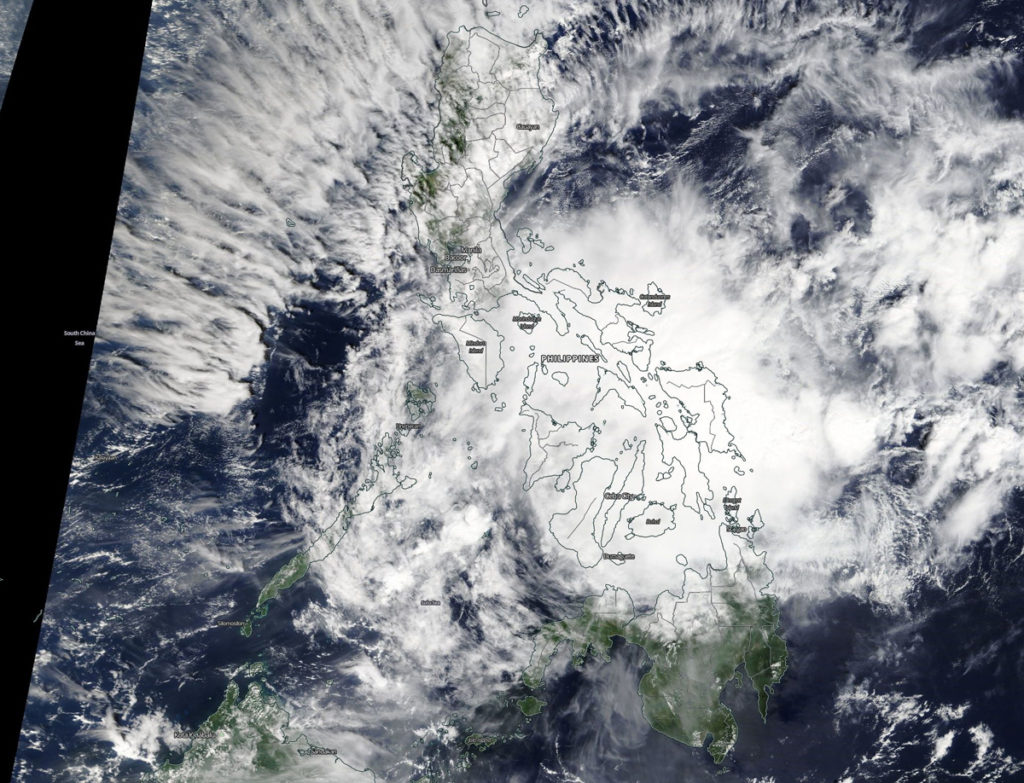
Tropical Depression 33W (33W), known locally in the Philippines as Tropical Cyclone Samuel has triggered many warnings and watches.
Storm Signal 1 was in effect in three regions of the Philippines.In Luzon, Signal 1 was in effect for Masbate, Ticao Island, Romblon, southern Oriental and southern Occidental Mindoro, northern Palawan including Cuyo Island and the Calamian group of islands. In Visayas, Signal 1 was in effect for Northern Samar, Samar, Eastern Samar, Biliran, Leyte, Southern Leyte, Bohol, Cebu, Siquijor, Negros Oriental and Occidental, Guimaras, Iloilo, Capiz, Aklana and Antique. In Mindanao, Signal 1 was in effect for Surigao del Norte and Sur, Agusan del Norte and Sur, Dinagat Islands, Misamis Oriental and Camiguin
On Nov. 20 a visible image from the Moderate Resolution Imaging Spectroradiometer or MODIS instrument aboard NASA’s Terra satellite showed a large disorganized storm moving through the central Philippines.
AT 10 a.m. EST (1500 UTC) On Nov. 20, Tropical depression 33W, (Philippines designation Samuel) was located near 10.9 degrees north latitude and 126.3 degrees east longitude, about 381 miles southeast of Manila, Philippines. 33W was moving to the west-northwest and had maximum sustained winds near 25 knots (28.7 mph)
33W will move generally west and cross the south-central Philippines. It is then forecast to move into the South China Sea and strengthen. The system will make a final landfall in central Vietnam and dissipate there.

